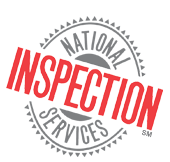The risks of office air pollution
Did you know that air within homes and other buildings can be more seriously polluted than outdoor air even in large, industrialized cities? Other research indicates that people spend about 90% of their time indoors. So, for most people, poor indoor air quality poses a greater risk than polluted outdoor air.
Many office buildings have significant air pollution sources. In addition, these buildings may be inadequately ventilated. Mechanical ventilation systems, for example, may not be designed or operated to provide adequate amounts of outside air. And people generally have less control over their office environments than their homes.
Poor air quality=health risks
Some indoor air pollutants in office environments pose long term risks (for example the cancer risk from asbestos.) In recent years, however, there has been an increase in the incidence of immediate health problems related to indoor air pollutants in office environments.
A number of well-identified illnesses, such as Legionnaires’ disease, asthma, hypersensitivity, pneumonitis and humidifier fever, have been directly traced to specific building problems. They have even been dubbed building-related illnesses.
You may also have heard of sick building syndrome. People with this mysterious illness complain of sneezing, stuffy or runny nose, fatigue, headaches, dizziness, nausea, irritability, forgetfulness and dry or burning nose, eyes and throat.
There is not a single manner in which these health problems appear. In some cases, problems begin as workers enter their offices and diminish as they leave; other times, symptoms continue until the illness is treated. Sometimes there are outbreaks of illness among many workers in a single building. Other times, health symptoms surface in just a few employees.
What causes poor indoor air quality?
Three main reasons for poor indoor air quality in office buildings are:
- the presence of indoor air pollution sources,
- poorly designed, maintained or operated ventilation systems, and
- uses of the building that were unanticipated or poorly planned for when the building was designed.
Indoor air pollution sources are the largest contributing factor. Commonly found office pollutants and their sources include:
- environmental tobacco smoke
- asbestos from insulating and fire retardant building materials
- formaldehyde from pressed wood products
- cleaning materials and activities
- restroom air fresheners
- paints and adhesives
- copy machines and other photographic and print materials
- biological contaminants from dirty ventilation systems
- pesticides from pest management practices
Mechanical ventilation systems in large buildings are designed and operated not only to heat and cool the air, but also to draw in and circulate outdoor air. When they are poorly designed, operated or maintained, however, ventilation systems can contribute to indoor problems in several ways. For example, problems arise when, in an effort to save energy, ventilation systems bring in inadequate amounts of outdoor air. Inadequate ventilation also occurs if the air supply and return vents within each room are blocked or placed such that outside air does not actually reach the breathing zone of building occupants. Improperly located outside air intake vents can also bring in air contaminated with automobile and truck exhaust, boiler emissions, fumes from dumpsters or air vented from restrooms.
Building investigations
Frequently, indoor air quality problems cannot be effectively identified or remedied without a comprehensive building investigation. These investigations may start with written questionnaires and telephone consultations. In some cases these inquiries may quickly uncover the problem. More often, however, investigators may need to come to the building to conduct personal interviews with occupants, to look for possible sources of the problems, and to inspect the design and operation of the ventilation system and other building features. Because taking measurements of pollutants at the very low levels often found in office buildings is expensive and sometimes not useful, investigators may not take many measurements.
The process of solving indoor air quality problems can be a slow one, involving several trial solutions before successful remedial actions can be identified.
